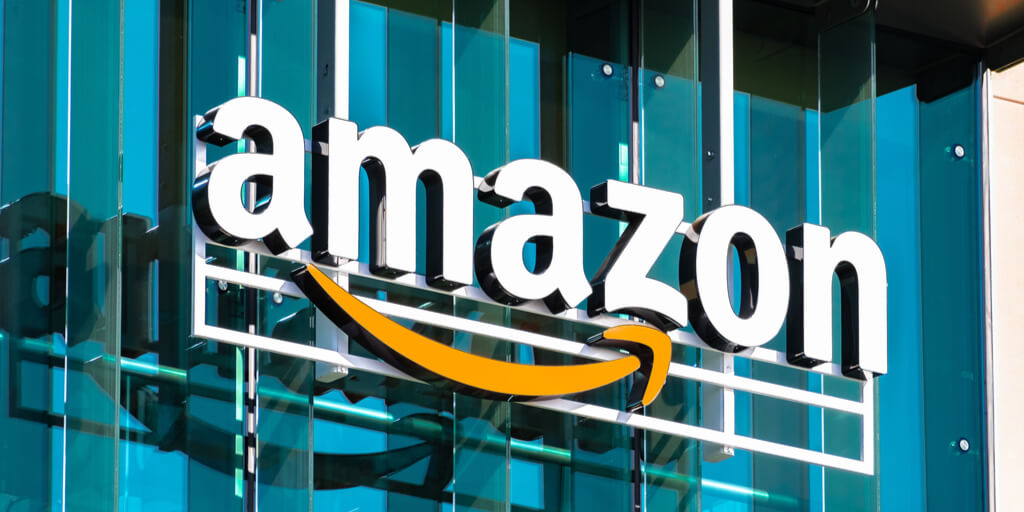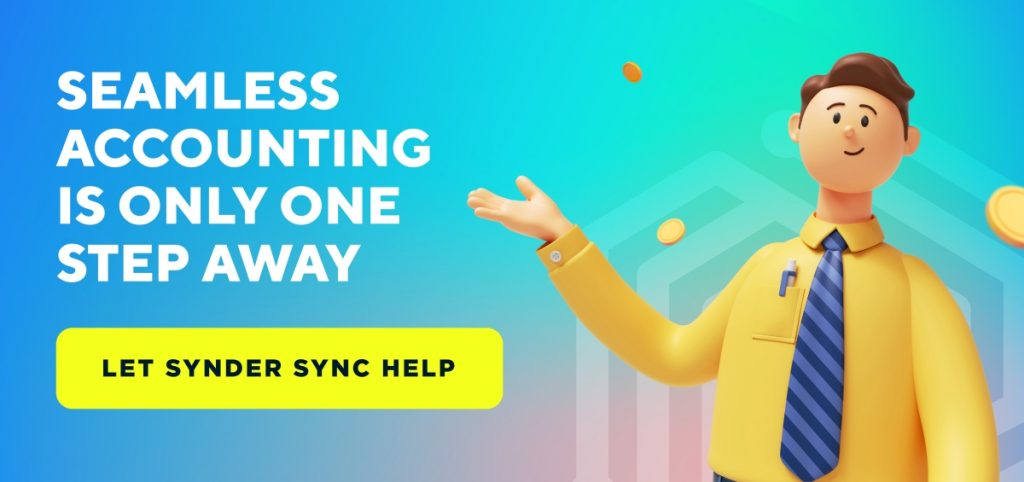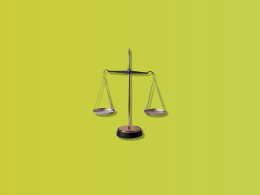Selling products on Amazon FBA provides merchants with plenty of opportunities to streamline the way they do business by having Amazon handle storage and order fulfillment. However, these benefits come with a cost in the form of Amazon FBA fees.
There are many types of fees that FBA sellers will incur. Knowing what to expect helps you plan future expenses, while understanding how those fees are calculated can help you stay clear of additional fees or unplanned charges.
In this article, we’ll take a close look at all fees which are specific to Amazon FBA sellers, in particular storage fees and fulfillment fees. We’ll show you how each type of fee is calculated and how much they actually cost.
Contents:
1. What do Amazon fees depend on?
3. Amazon FBA inventory storage fees
4. Aged inventory surcharge, previously known as Amazon FBA long-term storage fees
5. Amazon FBA fulfillment fees
- How to calculate the fulfillment fees?
- Fulfillment fee – the actual cost of FBA fees
- Special fulfillment fees
6. Additional fees – types and costs
- How to calculate the fulfillment fees?
- Unplanned service charge
- Return processing fee
- Other costs and additional Amazon selling fees

What do Amazon fees depend on?
Selling on Amazon might confuse new entrepreneurs because of various Amazon seller fees. The fees mainly depend on:
- Amazon seller plan (individual or professional);
- Products (referral fees);
- Fulfillment method (FBA or FBM).
Amazon seller plan or account: individual or professional
There are two types of plans or account types to choose from: individual and professional. With Amazon’s individual selling plan, the seller pays $ 0.99 per item sold, while Amazon’s professional selling plan charges $ 39.99 per month, regardless of how many items are sold.
Just looking at the numbers, we can see that if you’re selling less than 40 items per month, an individual plan might be a good option. Otherwise, a good choice will be a professional account.
Referral fees: percentage of the total sales price of a product
Amazon charges a percentage of the total price which includes the item price, shipping cost, and gift-wrapping charges or a minimum amount, whichever is greater. The referral fee depends on the type of product you sell. As an example, referral fees start at 3% for watches priced over $1,500. The maximum referral fee is 45% for Amazon device accessories. The minimum referral fee is $0.30 and the average rate is between 8% and 15%.
Type of fulfillment: Amazon FBA or FBM
There are two methods of fulfillment, depending on who’s handling the logistics:
- Fulfillment by Merchant (FBM);
- Fulfillment by Amazon (FBA).
Fulfillment by merchant
Fulfillment by merchant refers to the handling of storing, shipping, and customer care by the sellers themselves or with the help of a third party. This type of fulfillment allows you to economize on Amazon fulfillment fees but leaves you with the extra work of managing the shipping of your products. If you want to display Amazon’s Prime badge while fulfilling orders from your own facility, there’s a waiting list and the process of qualification you need to go through.
Fulfillment by Amazon
Amazon boasts one of the most advanced logistic networks around the world. Fulfillment by Amazon includes receiving and storing inventory at Amazon fulfillment centers, picking, packing, shipping, and handling, as well as customer service and product returns. FBA sellers automatically get Amazon’s Prime badge with their listings.
If you choose Amazon’s FBA program, the process of selling on Amazon includes these steps:
- Create your selling account, and set up FBA.
- Prepare your products according to Amazon guidelines.
- Ship your products to the Amazon warehouse.
- Pay FBA fulfillment and FBA storage fees + additional fees or charges.
Amazon provides you with some tools, like a fee calculator that can help you estimate your Amazon sales margin and compare your current fulfillment methods with Amazon’s.
What are Amazon FBA fees?
Sellers who use Amazon FBA need to know about the following fees:
- Inventory storage fees;
- Long-term storage fees;
- Fulfillment fees;
- Removal fees;
- Unplanned fees;
- Return processing fees.
Some fees are unavoidable, like storage or fulfillment fees, but others, like removal or unplanned fees, can be avoided once you know exactly what they are.
Find out what the best products to sell on Amazon FBA are.
How much do FBA fees usually cost?
With so many different types of FBA fees, it’s impossible to give a single number. However, we can provide a range of fees that you can expect to be charged for each type of fee. Here are the fee ranges for Amazon FBA 2023:
- Inventory storage fees ($0.56 – $3.63 per cubic foot);
- Long-term storage fees ($1.50 – $6.90 per cubic foot);
- Fulfillment fees ($3.22 – $179.28 + $0.83/lb above the first 90 lb);
- Removal fees ($0.97 – $13.05 + $1.06/lb above 10 lb);
- Unplanned fees ($0.20 – $2.00, per single service, per unit);
- Return processing fees ($2.12 – $75.08 + $0.25/lb above the first 90 lb).
The wide range of fee amounts depends on many factors which include, the type of products, the size, the time of the year, and many more. We will dive into details for all of the above fee ranges below.
Amazon FBA inventory storage fees
When you sell products on Amazon FBA, one of the types of fees that you’re bound to incur is storage fees. The standard type of storage fee is your monthly storage fee.
Amazon FBA monthly storage fees
Amazon charges monthly storage fees for storing products in Amazon FBA fulfillment centers. The amount of fees that a seller needs to pay depends on several criteria:
- Product size tier;
- Time of the year;
- Volume per unit;
- Average daily units in storage;
- Dangerous goods classification (if applicable).
How to calculate monthly storage fees?
Here’s the formula Amazon FBA gives for monthly storage fee calculation:
Fee per Product = Average Daily Units x Volume per Unit x Applicable Rate
The applicable rate includes the time of the year, the tier of product sizes, and whether the goods are classified as dangerous or not. Since the average daily units and volume per unit are calculations based on how many of your products are stored at Amazon FBA (in units and volume), they’re the variables of your business. What Amazon FBA can provide are rates that are used to calculate your monthly storage fees. So let’s take a look at them.
Product size tier
The products in Amazon FBA are divided into 2 main groups – standard-size items and oversized items, which are then further divided into subcategories giving a total of 6 tiers of product sizes:
- Standard-sized:
- Small;
- Large;
- Oversized:
- Small;
- Medium;
- Large;
- Special.
To determine which of the above tiers the products are in, you need to know the unit weight, product dimensions, and dimensional weight of a packaged item.
Time of the year
Amazon FBA storage fee applies a higher rate to the peak season (October – December) than to the off-season months (January – September).
For example, for the goods stored in the off-peak season from the 1st of February 2023, Amazon FBA sellers will pay monthly $0.87 per cubic foot for standard-size and $0.56 per cubic foot for an oversized product. For items stored during the peak season, Amazon FBA sellers will pay monthly $2.40 per cubic foot for standard size and $1.40 per cubic foot for an oversized product. These rates apply to non-dangerous goods only.
From the above example, we can see that the peak season will cost more for storing compared to the off-peak season, which isn’t really a surprise. However, it’s cheaper to store oversized goods than standard-sized ones. That’s something unusual. Amazon explains it by saying that it‘s actually more expensive to store standard-sized items due to special shelving, drawers, and bins that these products need.
Volume per unit
This metric provides the volume per unit, measured in cubic feet. This applies to the fully packaged product in accordance with Amazon FBA regulations.
Average daily units
It’s the average daily units stored in Amazon FBA per month. It’s best to check your Monthly Storage Fees Report to see what that number for your business is.
Dangerous goods
Amazon FBA provides sellers with an option to sell and store goods that are classified as dangerous items. It might seem that this category will concern a very limited number of Amazon FBA sellers, but actually, that’s not the case. What’s classified as dangerous goods includes smartphones, laptops, spray paints, household cleaners, cartridges, toners, perfumes, and many more. For more examples check the list provided by Amazon.
As you can see, what’s classified as dangerous goods makes up a very large group of items. It’s necessary to know whether your items belong to this category, or are classified in another group of products. Without proper classification, your products will be set to inactive, in other words, you’ll not be able to sell them. That’s why learning about classification is so important.
Amazon provides a Dangerous Goods Identification Guide (Hazmat) to help you determine whether your products belong to this category. This guide also provides information about goods that are prohibited to sell on Amazon. Classification of the goods with Amazon FBA is crucial as such items need to be stored and transported in a special manner. Moreover, storage can be done only in fulfillment centers that deal with such materials, while transporting usually requires ground transport as opposed to faster air transportation.
FBA Dangerous Goods Program offers Amazon FBA sellers the option to sell such items and includes a special set of fees that applies to handling, fulfillment, storage, and other matters.
For the dangerous goods stored in the off-peak season, Amazon FBA sellers will pay monthly $0.99 per cubic foot for standard-size and $0.78 per cubic foot for an oversized product. For the same type of items, stored during the peak season, Amazon FBA sellers will pay monthly $3.63 per cubic foot for standard size and $2.43 per cubic foot for an oversized product.
Storage utilization surcharge
From the 1st of April 2023, Amazon FBA will introduce a storage utilization surcharge that’ll be added to the monthly storage fee but only for the professional sellers who have a high volume of goods stored in Amazon FBA centers compared to the sales (storage utilization ratio above 26 weeks).
The storage utilization fee will not apply to the following groups of sellers:
- New sellers – those who shipped their inventory to the Amazon FBA fulfillment center less than 52 weeks ago;
- Holders of an individual selling account;
- Sellers with a daily volume of less than 25 cubic feet;
- Professional sellers with storage utilization surcharge of fewer than 26 weeks.
The amount of the storage utilization surcharge depends on the storage utilization ratio. The ratio is calculated by dividing the average daily inventory volume stored in the Amazon FBA center by the average daily shipped volume. In other words, the ratio reflects how much inventory you keep with Amazon FBA vs how much of your inventory leaves the center. The volume is calculated in cubic feet and applies to the trailing 13 weeks period.
Storage utilization surcharge – fee structure for off-peak season
During the off-peak season (January – September), starting from the 1st of April 2023, professional sellers of storage utilization ratio between 26 – 39 weeks will have an additional surcharge of $0.69 per cubic foot added to their base monthly storage fee ($0.87 per cubic foot) for the standard-sized items. This will total $1.56 per cubic foot of monthly storage fee. While oversized items will incur an additional surcharge of $0.46 per cubic foot added to the monthly storage fee ($0.56 per cubic foot), totaling out to $1.02 per cubic foot.
If the utilization ratio, during off-peak season exceeds 39 weeks, professional sellers will have an additional surcharge of $0.94 per cubic foot added to their base monthly storage fee ($0.87 per cubic foot) for the standard-sized items. This will total $1.81 per cubic foot of monthly storage fee. While oversized items will incur an additional surcharge of $0.63 per cubic foot added to the monthly storage fee ($0.56 per cubic foot), totaling out to $1.19 per cubic foot.
Storage utilization surcharge – fee structure for peak season
It’s important to note that during the peak season (October – December), the utilization surcharge itself doesn’t change so the same fee structure applies to off-peak and peak seasons. However, since the monthly storage fees fluctuate depending on those seasons, the total amount of storage fees will be different for those 2 time periods (higher for the peak season).
Aged inventory surcharge, previously known as Amazon FBA long-term storage fees
In the Amazon FBA fee structure, what was known as long-term storage fees is now called aged inventory surcharge. The main concept remains the same – it’s a fee that applies to the old stock that you keep at the Amazon FBA fulfillment center. The assessment of the fee is conducted on the 15th of every month.
The aged inventory surcharge starts to be effective for units that have been stored for 271 or more days. There are 2 tiers in this group of fees:
- 271 – 365 days – charged $1.50 per cubic foot;
- 365 days – older – charged $6.90 per cubic foot or $0.15 per unit, whichever is greater.
From the 15th of April 2023, the inventory surcharge will be divided into 7 tiers to reflect the different time periods that the inventory stays in the Amazon FBA centers. The fee structure will look as follows:
- 181 – 210 days – charged $0.50 per cubic foot excluding items listed under the clothing, watches, shoes, jewelry, and bags categories in the US;
- 211 – 240 days – charged $1.00 per cubic foot excluding items listed under the clothing, watches, shoes, jewelry, and bags categories in the US;
- 241 – 270 days – charged $1.50 per cubic foot excluding items listed under the clothing, watches, shoes, jewelry, and bags categories in the US;
- 271 – 300 – charged $3.80 per cubic foot;
- 301 – 330 – charged $4.00 per cubic foot;
- 331 – 365 – charged $4.20 per cubic foot;
- 365 or more – charged $6.90 per cubic foot or $0.15 per unit, whichever is greater.
Amazon FBA centers ship items on a first-in, first-out basis (FIFO). However, if you have old units stored in the Amazon FBA center, but the one shipped to your customer was actually a new unit, Amazon reassures its FBA sellers that the oldest unit is the one that’ll be deducted from the inventory.
Find out everything you need to know about successful Amazon dropshipping.
Amazon FBA fulfillment fees
A large portion of Amazon FBA fees comes from fulfillment, so let’s have a look at the fee structure for these expenses.
Amazon FBA offers different plans for different types of products, business models, or shipping destinations. So fulfillment fees can vary according to the chosen plan:
- FBA Small and Light;
- FBA Subscribe & Save;
- FBA Pan-EU;
- FBA Export;
- Multi-Channel Fulfillment.
Amazon FBA has special fulfillment fees for the FBA Small and Light plan and Multi-Channel Fulfilment plan, so if you subscribed to one of those, different rates will apply.
Amazon FBA fulfillment fee is calculated on a per-unit basis and is sometimes referred to as a ‘pick and pack’ fee.
How to calculate the fulfillment fees?
To calculate the fulfillment fee, Amazon FBA uses the following metrics:
- Product size tier;
- Shipping weight;
- Dangerous goods (if applicable);
- Apparel vs non-apparel.
Product size tiers
Product size tiers rules remain exactly the same as for the storage fees.
Shipping weight
Shipping weight is calculated based on the unit weight or dimensional weight, whichever is greater, for large standard size and oversize items except special oversize. For small standard-size and special oversized items, unit weight is always used to calculate the shipping weight.
The above rules of calculating shipping weight already apply to FBA non-apparel, and dangerous goods and will apply to apparel products from February 16, 2023.
Dangerous goods
Similarly to storage fees, products in this group will require different handling during packing and shipment so their fulfillment fee is on average higher.
Apparel vs non-apparel
When selling on Amazon FBA, apparel goods make a special category in regards to a fulfillment fee, with apparel goods on average having a higher fee amount than non-apparel items.
Fulfillment fee – the actual cost of FBA fees
We’ve seen how the fee is calculated, now let’s look at the actual cost of fees.
The products can be further divided into 3 sections: non-apparel, apparel, and dangerous goods.
Non-apparel fees
For standard-size non-apparel, non-dangerous goods, the fee ranges from $3.22 to $7.17 + $0.16/half-lb above the first 3 lb, depending on the shipping weight. For oversized non-apparel, non-dangerous goods, the fee ranges from $9.73 + $0.42/lb above the first lb to $158.49 + $0.83/lb above the first 90 lb, depending on the shipping weight.
Apparel fees
For standard-size apparel goods, the fee ranges from $3.43 to $7.17 + $0.16/half-lb above the first 3 lb, depending on the shipping weight. For oversized apparel goods, the fee ranges from $9.73 + $0.42/lb above the first lb to $158.49 + $0.83/lb above the first 90 lb, depending on the shipping weight.
Dangerous goods fees
For standard-size dangerous goods, the fee ranges from $4.19 to $7.63 + $0.16/half-lb above the first 3 lb, depending on the shipping weight. For oversized dangerous products, the fee ranges from $10.48 + $0.42/lb above the first lb to $179.28 + $0.83/lb above the first 90 lb, depending on the shipping weight.
Special fulfillment fees
If your products belong to a group of items that requires special handling during packing and shipping, you’ll incur additional charges.
Lithium batteries fee
If the products you sell have lithium batteries, an additional $0.12 fee per unit will be applied to your fulfillment fee.
Special handling fee
This type of fee applies to TVs that are 42 inches or larger. The special handling fee costs $42 per unit. Smaller TVs might also be subject to this fee due to fragility or weight.
Additional fees – types and costs
Storage and fulfillment fees amount to the main element of your fee structure with Amazon FBA. However, there are also other types of fees that you should know about.
How to remove or dispose of your inventory products
If within your inventory there are some items that you choose to remove, they can either be returned or disposed of.
Removal order fee
If you choose to return the items, they can be sent to your warehouse, your supplier, your distributor, or to you. You can’t send them to another fulfillment center or to your customers. The removal might take 90 days and then a further 2 weeks needs to be allowed for shipment. So it isn’t a short process, and Amazon stresses that unfortunately, it can’t be expedited.
The removal order fee is charged per unit, based on the shipping weight. From January 17, 2023, for standard-sized items rates vary from $0.97 to $2.83 + $1.06/lb above 2 lb, depending on the shipping weight. For oversized and special handling items (this includes dangerous goods but also some apparel, shoes, watches, jewelry, and more) rates range from $3.12 to $13.05 + $1.06/lb above 10 lb depending on the shipping weight.
Disposal fee
If you choose to dispose of your inventory, the fee structure and costs are identical to those of the removal order fee. However, the process is much shorter, as it usually takes 14 days.
Unplanned service charge
Amazon FBA provides detailed guidelines for how the product should be prepared before being shipped to the fulfillment center. If those conditions aren’t met, the product has to be adequately prepared for storing and further shipping by Amazon staff. This service triggers an unplanned service charge.
The charge is applied on a per-unit basis and the services include bagging, bubble wrapping, taping, and providing Amazon labels. Depending on whether the problem with the order is categorized as standard, elevated or critical, services range from $0.20 to $2.00, per single service, per unit.
Return processing fee
This fee only applies to certain types of items that customers return. It’s charged on the per unit basis depending on the size tier in the Apparel and Shoes categories. This fee doesn’t apply to products in Jewelry, Sunglasses, Luggage, Handbags, and Watches.
The return processing fee for standard-size items ranges from $2.12 to $3.41 + $0.20/lb above the first 3 lb, depending on the shipping weight. For oversized items it varies from $4.19 + $0.20/lb above the first 2 lb to $75.08 + $0.25/lb above the first 90 lb, depending on the shipping weight.
Other costs and additional Amazon selling fees
There are additional Amazon fees that you should know about. These are:
- Rental book service fees;
- High-volume listing fees (cataloging costs);
- Refund administration fee.
When selling on Amazon, there are a number of optional programs you can use to scale your business:
- Advertising;
- Inventory placement service (helps to place your inventory around the country to minimize shipping time);
- Premium account services (includes coaching and training, managing your account to grow sales).

How much does it cost to start an Amazon FBA?
While fees are a standard part of any Amazon FBA business, they are other costs you need to consider before joining this venture. We’ve already mentioned Amazon’s professional selling plan ($ 39.99 per month), here are other expenses that need to be allocated, such as: purchasing your inventory, making product photography, barcode purchase, or some marketing efforts (Amazon ads, social media ads, and other). All those expenses add up.
A study by Jungle Scout found that when sellers started their Amazon business the range of expenditure varied between $500 or less (17% of sellers) up to more than $10,000 (22% of sellers) with the average range being somewhere between $1001 and $5000 (36% of sellers). Their calculations of Amazon FBA expenses showed a range between $2,790 and $3,940.
That’s an interesting finding especially since the report also states that 89% of Amazon sellers are profitable. Meaning, regardless of their budgets the vast majority of Amazon sellers are able to make profits.
Closing thoughts
When using Amazon FBA, fees are a part of your business that you need to be clear about in order not only to save on storage and fulfillment costs, but also avoid all the unplanned charges. We hope that those detailed descriptions of fees give you a better understanding of Amazon’s FBA fee structure and will help you plan better for your business.
If you’re looking to streamline your accounting when selling on Amazon and possibly on other e-commerce platforms, Synder will do it for you, bringing all the data into one place. Synder is a reliable partner that syncs all your e-commerce platforms and payment gateways, giving you accurate and detailed information about all your transactions. Check out our free trial or book a demo to find out what Synder can do for your business.
Find out how Synder helped Brenden Ernestine organize Amazon fees and trigger e-commerce growth.

.png)






This is a very good tip particularly to those fresh to the blogosphere.
Short but very accurate information… Appreciate your sharing this
one. A must read article!
Thanks for sharing your thoughts. I really appreciate your efforts and I am waiting for your further
write ups thanks once again.
Thank you so much!
I am a new Amazon FBA seller and didn’t know what the he* was going on with all the fees being deducted from my credit card. This helped me so much, I truly appreciate you for putting in the time and working on this.
Thanks
Thank you for your feedback! It’s great to hear that our content was helpful in clarifying the various fees associated with being an Amazon FBA seller. Understanding these fees can indeed be overwhelming at first, so we’re delighted that our information made things clearer for you. Best of luck with your new venture!